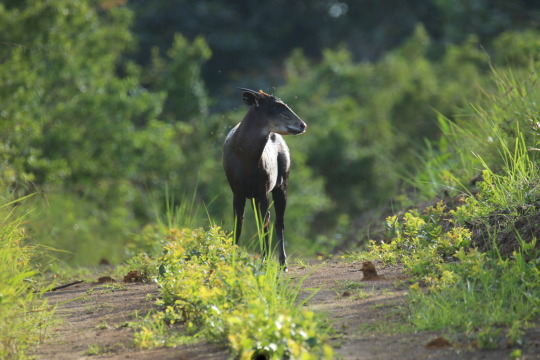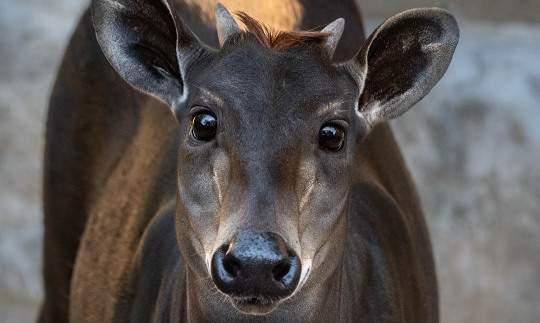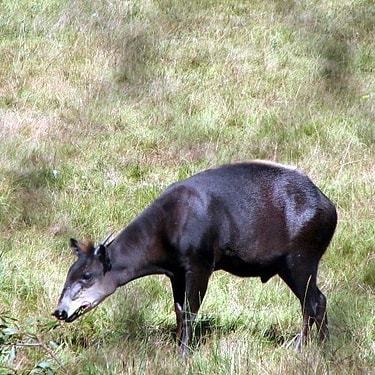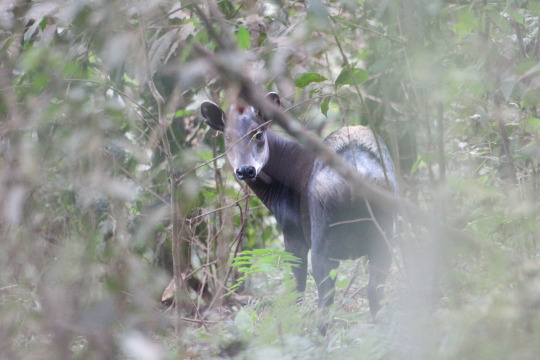#Cephalophus silvicultor
Text

Yellow-backed duiker Cephalophus silvicultor
Observed by bureaubenjamin, CC BY-NC
13 notes
·
View notes
Text


#my polls#polls#tumblr polls#animal polls#animals#poll blog#duiker#antelope#bovidae#near threatened#african wildlife#san antonio zoo
32 notes
·
View notes
Text

Yellow-backed duiker (Cephalophus silvicultor)
The most widespread species of duiker, these can be found in forests across tropical Africa. They eat mostly fruits, but also leaves, roots, and occasionally small animals. The word duiker comes from the Dutch and Afrikaans word for ‘diver’, which refers to these antelopes’ habit of diving into the underbrush when threatened.
#markhors-menagerie#animal facts#animals#biology#fun facts#ungulates#even toed ungulates#ruminants#bovidae#antelope#duiker#yellow-backed duiker
7 notes
·
View notes
Link
1 note
·
View note
Photo

Antílope silvicultor o antílope de lomo amarillo es una especie de mamífero artiodáctilo de la familia Bovidae que habita las selvas del África occidental y central desde Senegal hasta Uganda occidental con una posible pequeña población en Gambia. Su gama se extiende también hacia el sur en Ruanda, Burundi, República Democrática del Congo, y la mayor parte de ZZambia Las glándulas de la cara segregan olor, con el que marcan ramas, hierbas y pequeños troncos para delimitar su territorio. Algunos de los duiker son monógamos y se emparejan de por vida, aunque la pareja pasa muy poco tiempo junta. Es activo tanto durante el día como durante la noche. El color de la cresta es marrón y el del morro blanco. Sus patas son finas y cortas, el lomo curvado y llevan la cabeza baja; en esta desarrollan una cresta que en ocasiones llega a cubrir sus cuernos. Los machos todos tienen cuernos y en algunas especies las hembras también. Los cuernos son muy cortos, anillados en las partes inferiores y luego lisas hasta la punta, puntiagudas y curvadas hacia atrás. Las orejas son pequeñas y redondeadas. En la cara tienen una superficie larga sin pelo que es una glándula que produce olor, su altura puede ser de 8 a85 cm y un peso entre 50 y 75 kg. Selvas tropicales, sabana arbórea y bosques Descripción sacada de https://es.m.wikipedia.org/wiki/Cephalophus_silvicultor https://www.ecured.cu/Cephalophus_silvicultor Fotos sacadas de https://panama.inaturalist.org/taxa/42294-Cephalophus-silvicultor https://www.instagram.com/p/CRAhGL2tNeB/?igshid=NGJjMDIxMWI=
0 notes
Photo

Cephalophus silvicultor
Photo of the day July 30, 2020
13 notes
·
View notes
Photo

YELLOW BACKED DUIKER Cephalophus silvicultor ©Laura Quick The yellow-backed duiker is a forest dwelling antelope in the order Artiodactyla from the family Bovidae. Yellow-backed duikers are the most widely distributed of all duikers. They are found mainly in Central and Western Africa, ranging from Senegal to Western Uganda with possibly a few in Gambia. They are the largest duiker species. Their faces are short with rounded or humped bare noses and large scent glands beneath the eyes. They have sharp vision and good senses of hearing and smell. The brain-to-body ratio in this species is higher than any other antelope. The word “duiker” comes from Afrikans and means “diver” because of the way these animals dive for cover when threatened. #yellowbackedduiker #cephalophussilvicultor #nearthreatened #©lauraquick #diver #africa #westafrica #bovidae #artiodactyla #glaza #eventoedungulate #ungulate #losangelesphotographer #losangeleszoo #lazoo #losangeleszooandbotanicalgardens #naturephotography #scentglands https://www.instagram.com/p/B8so3J8HkmZ/?igshid=1v6trlo6y1vof
#yellowbackedduiker#cephalophussilvicultor#nearthreatened#©lauraquick#diver#africa#westafrica#bovidae#artiodactyla#glaza#eventoedungulate#ungulate#losangelesphotographer#losangeleszoo#lazoo#losangeleszooandbotanicalgardens#naturephotography#scentglands
0 notes
Photo

Yellow-backed duiker Cephalophus silvicultor
Observed by biancazoletto, CC-BY-NC
2 notes
·
View notes